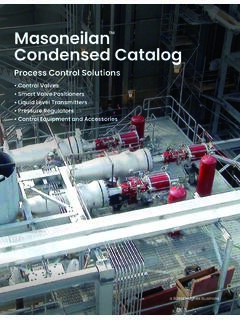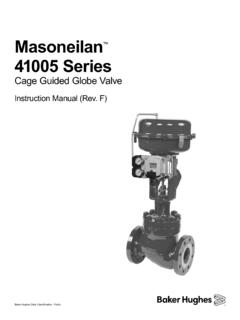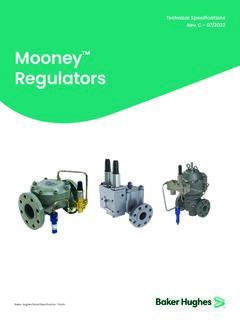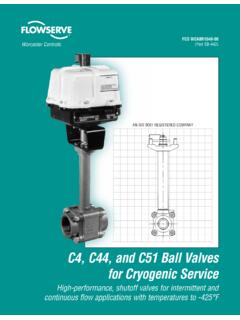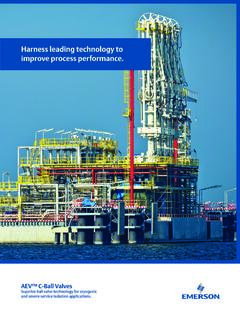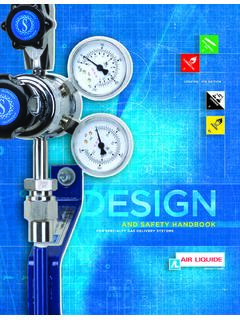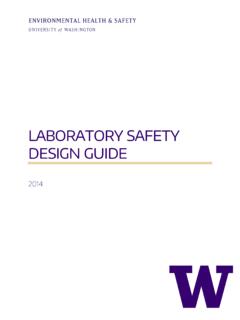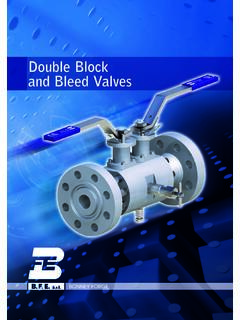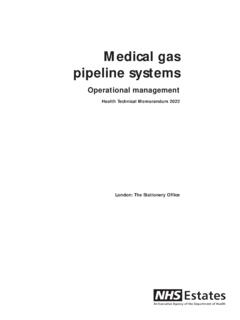Transcription of Consolidated 1900 Series - Baker Hughes
1 Consolidated 1900 Series Safety Relief ValvesThe Eductor Tube Advantage Instruction Manual (Rev. H) Baker Hughes Data Classification : Public2 | Baker Hughes 2022 Baker Hughes Company. All rights INSTRUCTIONS PROVIDE THE CUSTOMER/OPERATOR WITH IMPORTANT PROJECT-SPECIFIC REFERENCE INFORMATION IN ADDITION TO THE CUSTOMER/OPERATOR S NORMAL OPERATION AND MAINTENANCE PROCEDURES. SINCE OPERATION AND MAINTENANCE PHILOSOPHIES VARY, Baker Hughes (AND ITS SUBSIDIARIES AND AFFILIATES) DOES NOT ATTEMPT TO DICTATE SPECIFIC PROCEDURES, BUT TO PROVIDE BASIC LIMITATIONS AND REQUIREMENTS CREATED BY THE TYPE OF EQUIPMENT PROVIDED. THESE INSTRUCTIONS ASSUME THAT OPERATORS ALREADY HAVE A GENERAL UNDERSTANDING OF THE REQUIREMENTS FOR safe OPERATION OF MECHANICAL AND ELECTRICAL EQUIPMENT IN POTENTIALLY HAZARDOUS ENVIRONMENTS. THEREFORE, THESE INSTRUCTIONS SHOULD BE INTERPRETED AND APPLIED IN CONJUNCTION WITH THE SAFETY RULES AND REGULATIONS APPLICABLE AT THE SITE AND THE PARTICULAR REQUIREMENTS FOR OPERATION OF OTHER EQUIPMENT AT THE INSTRUCTIONS DO NOT PURPORT TO COVER ALL DETAILS OR VARIATIONS IN EQUIPMENT NOR TO PROVIDE FOR EVERY POSSIBLE CONTINGENCY TO BE MET IN CONNECTION WITH INSTALLATION, OPERATION OR MAINTENANCE.
2 SHOULD FURTHER INFORMATION BE DESIRED OR SHOULD PARTICULAR PROBLEMS ARISE WHICH ARE NOT COVERED SUFFICIENTLY FOR THE CUSTOMER/OPERATOR'S PURPOSES THE MATTER SHOULD BE REFERRED TO Baker Hughes . THE RIGHTS, OBLIGATIONS AND LIABILITIES OF Baker Hughes AND THE CUSTOMER/OPERATOR ARE STRICTLY LIMITED TO THOSE EXPRESSLY PROVIDED IN THE CONTRACT RELATING TO THE SUPPLY OF THE EQUIPMENT. NO ADDITIONAL REPRESENTATIONS OR WARRANTIES BY Baker Hughes REGARDING THE EQUIPMENT OR ITS USE ARE GIVEN OR IMPLIED BY THE ISSUE OF THESE INSTRUCTIONS ARE FURNISHED TO THE CUSTOMER/OPERATOR SOLELY TO ASSIST IN THE INSTALLATION, TESTING, OPERATION, AND/OR MAINTENANCE OF THE EQUIPMENT DESCRIBED. THIS DOCUMENT SHALL NOT BE REPRODUCED IN WHOLE OR IN PART WITHOUT THE WRITTEN APPROVAL OF Baker !For valve configurations not listed in this manual, please contact your local Green Tag Center (GTC ) for the United States Customary System (USCS) values are converted to metric values using the following conversion factors:USCS UnitConversion FactorMetric 412L/ F5/9 ( F-32) CConversion TableNote: Multiply USCS value with conversion factor to get metric 1900 Series SRV Instruction Manual | 3 2022 Baker Hughes Company.
3 All rights of ContentsI. Product Safety Sign and Label System ..6II. Safety Alerts ..7 Read - Understand - Practice ..7 III. Safety Notice ..8IV. Warranty Information ..8V. Terminology for Safety Relief Valves ..9VI. Handling and Storage ..10 Handling ..10 VII. Pre-Installation and Installation Instructions ..10 VIII. Design Features and Nomenclature ..11 Cap and Lever Interchangeability ..11 Design Simplicity ..11 Nomenclature Related to Design Features ..11 Simple Blowdown Adjustment ..11 Valve Interchangeability ..11IX. Introduction ..11X. Consolidated 1900 Series Safety Relief Valve ..12A. Metal Seat Valve ..12B. Standard Cap Types ..13C. Bellows Metal Seat Valve ..14D. V-W Bellows Metal Seat Valve ..15E. Soft Seat Valve ..16F. Themodisc ..17G. UM Cryogenic Valve ..18XI. Recommended Installation Practices ..19A. Mounting Position.
4 19B. Inlet Piping ..19C. Outlet Piping ..20 XII. Disassembly of 1900 Series Safety Relief Valves ..21A. General Information ..21B. SRV Disassembly ..21C. Cleaning ..24 XIII. Maintenance Instructions ..25A. General Information ..25B. Lapping Nozzle Seats (Non-O-Ring Styles) ..25C. Lapped Nozzle Seat Widths ..26D. Lapping Disc Seats ..28E. Precautions and Hints for Lapping Seats.. 28F. Lapping O-Ring Seating Surfaces ..29 XIV. Inspection and Part Replacement ..35A. Nozzle Inspection Criteria ..35B. Nozzle Seat Width ..35C. Nozzle Bore Inspection ..354 | Baker Hughes 2022 Baker Hughes Company. All rights 1900 Series SRV Standard Disc Inspection Areas ..35E. 1900 Series ThermodiscTM Replacement Criteria ..35F. 1900 UM Series Cryogenic Disc Replacement Criteria ..35G. Disc Holder Inspection Criteria ..41H. Guide Inspection Criteria ..44I.
5 Spindle Inspection Criteria ..44J. Spring Inspection Criteria ..45XV. Reassembly of 1900 Series SRV ..46A. General Information ..46B. Preparation ..46C. Lubrication ..46D. Reassembly Procedure ..46 XVI. Setting and Testing ..53A. General Information ..53B. Test Equipment ..53C. Test Media ..53D. Setting the Valve ..53E. Set Pressure Compensation ..53F. Setting the Pressure ..55G. Seat Tightness Testing ..55H. Recommended Backpressure Testing for Joint Leakage ..57I. Blowdown Adjustment ..57J. Hydrostatic Testing and Gagging ..58K. Manual Popping of the Valve ..58 XVII. Troubleshooting 1900 Series SRVs ..59 XVIII. 1900 Series Safety Relief Valve Options ..60A. General Information ..60B. Conversion from Conventional to Bellows Type.. 60C. Conversion from Bellows to Conventional Type.. 62D. Optional Glide-Aloy Parts.
6 63 XIX. Maintenance Tools and Supplies ..64A. Lapping Tools ..65XX. Replacement Parts Planning ..66A. Basic Guidelines ..66B. Replacement Parts List ..66C. Identification and Ordering Essentials ..66 XXI. Genuine Consolidated Parts ..67 XXII. Recommended Spare Parts for 1900 Series SRVs ..68 XXIII. Manufacturer s Field Service, Repair and Training Program ..70 Consolidated 1900 Series SRV Instruction Manual | 5 2022 Baker Hughes Company. All rights and when required, appropriate safety labels have been included in the rectangular margin blocks throughout this manual. Safety labels are vertically oriented rectangles as shown in the representative examples (below), consisting of three panels encircled by a narrow border. The panels can contain four messages which communicate: The level of hazard seriousness The nature of the hazard The consequence of human, or product, interaction with the hazard.
7 The instructions, if necessary, on how to avoid the top panel of the format contains a signal word (DANGER, WARNING, CAUTION or ATTENTION) which communicates the level of hazard center panel contains a pictorial which communicates the nature of the hazard, and the possible consequence of human or product interaction with the hazard. In some instances of human hazards the pictorial may, instead, depict what preventive measures to take, such as wearing protective bottom panel may contain an instruction message on how to avoid the hazard. In the case of human hazard, this message may also contain a more precise definition of the hazard, and the consequences of human interaction with the hazard, than can be communicated solely by the Product Safety Sign and Label SystemDANGER Immediate hazards which WILL result in severe personal injury or Hazards or unsafe practices which COULD result in severe personal injury or Hazards or unsafe practices which COULD result in minor personal Hazards or unsafe practices which COULD result in product or property not remove bolts if pressure in line, as this will result in severe personal injury or all valve exhaust/leakage points to avoid possible severe personal injury or necessary protective equipment to prevent possible injury3 Handle valve carefully.
8 Do not drop or | Baker Hughes 2022 Baker Hughes Company. All rights Safety AlertsRead - Understand - PracticeDanger AlertsA DANGER alert describes actions that may cause severe personal injury or death. In addition, it may provide preventive measures to avoid severe personal injury or alerts are not all-inclusive. Baker Hughes cannot know all conceivable service methods nor evaluate all potential hazards. Dangers include: High temperature/pressure can cause injury. Ensure all system pressure is absent before repairing or removing valves. Do not stand in front of a valve outlet when discharging. STAND CLEAR OF VALVE to avoid exposure to trapped, corrosive media. Exercise extreme caution when inspecting a pressure relief valve for leakage. Allow the system to cool to room temperature before cleaning, servicing, or repairing. Hot components or fluids can cause severe personal injury or death.
9 Always read and comply with safety labels on all containers. Do not remove or deface container labels. Improper handling or misuse could result in severe personal injury or death. Never use pressurized fluids/gas/air to clean clothing or body parts. Never use body parts to check for leaks, flow rates, or areas. Pressurized fluids/gas/air injected into or near the body can cause severe personal injury or death. It is the owner s responsibility to specify and provide protective wear to protect persons from pressurized or heated parts. Contact with pressurized or heated parts can result in severe personal injury or death. Do not work or allow anyone under the influence of intoxicants or narcotics to work on or around pressurized systems. Workers under the influence of intoxicants or narcotics are a hazard to themselves and other employees.
10 Actions taken by an intoxicated employee can result in severe personal injury or death to themselves or others. Always perform correct service and repair. Incorrect service and repair can result in product or property damage or severe personal injury or death. Always use the correct tool for a job. The misuse of a tool or the use of an improper tool can result in personal injury, damage to product or property. Ensure the proper health physics procedures are followed, if applicable, before starting operation in a radioactive AlertsA CAUTION alert describes actions that may result in a personal injury. In addition, they may describe preventive measures that must be taken to avoid personal injury. Cautions include: Heed all service manual warnings. Read installation instructions before installing valve(s). Wear hearing protection when testing or operating valves.
